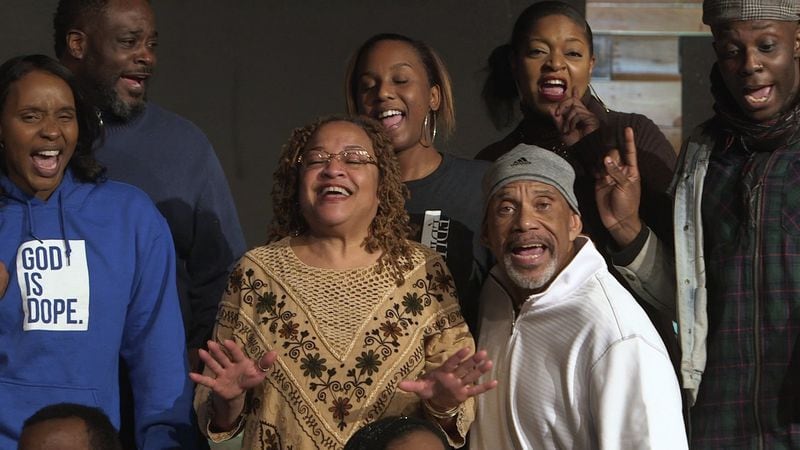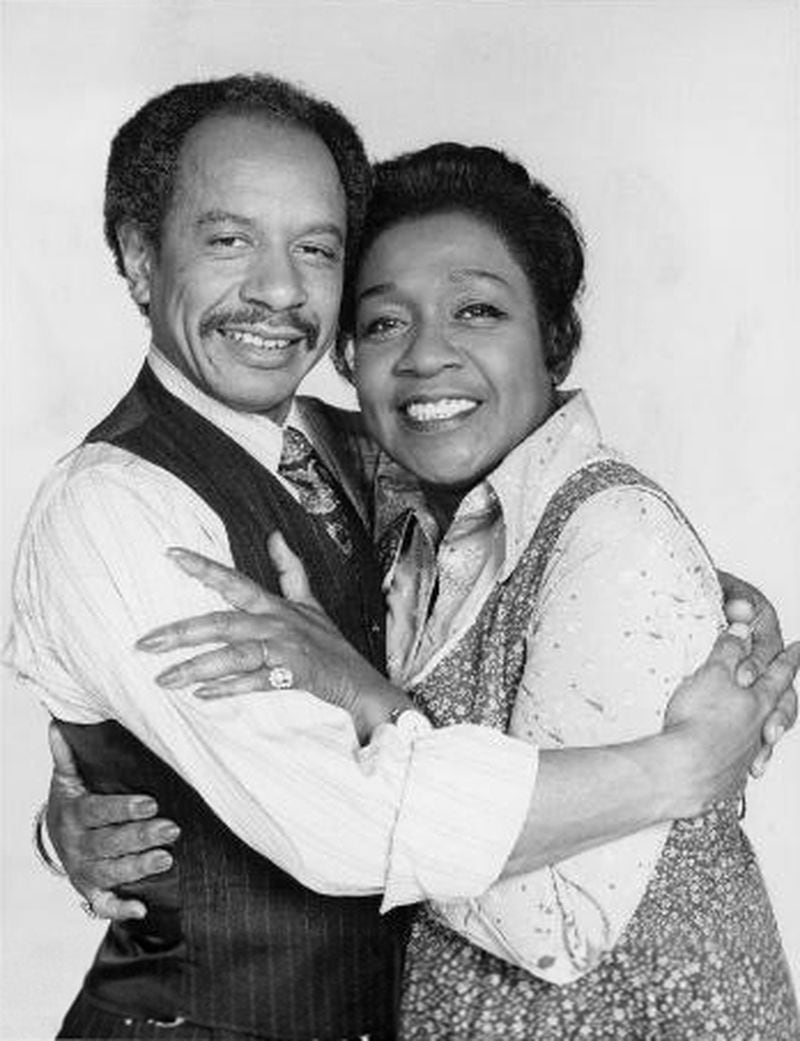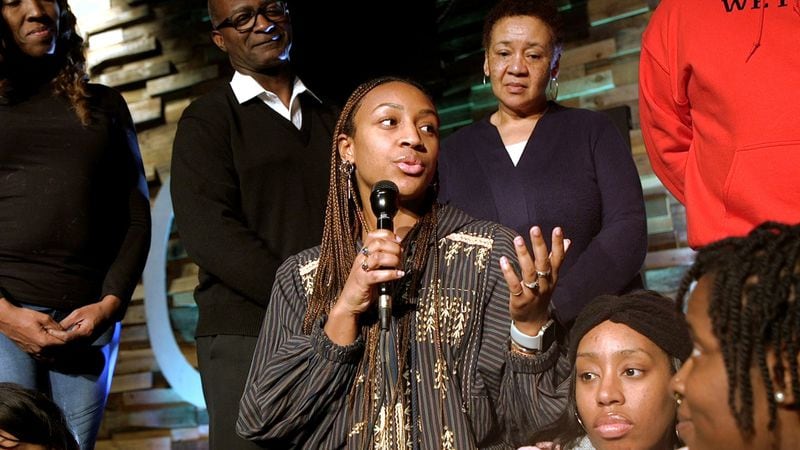During the month of February, The Atlanta Journal-Constitution has published a daily feature highlighting African American contributions to our state and nation. This is the fifth year of the AJC Sepia Black History Month series. In addition to the daily feature, the AJC also published deeper examinations of contemporary African American life each Sunday.
Chip Marshall remembers the cold winter day in 1973 when his father came home depressed, mad and frustrated.
It was around Christmas and, after 20 years as a factory worker in Columbus, Ohio, Isaac Marshall had just gotten laid off.
» MORE: Full coverage of Black History Month
The prospect of no presents was the least of the family’s worries, Chip Marshall said. They had to worry about how to pay the rent.
“It really affected me and caused me to put my nose to the grindstone to continue my education and finish college,” said Marshall, who was an 18-year-old freshman at Ohio State University at the time. Marshall changed his major from computer science to economics, “to get a better understanding of what was going on.
He would get an economics degree from OSU and a master’s in economics from Atlanta University.
“Now, I am a first-generation professional, and I have children who are second-generation professionals, who have gone to elite schools like Howard, Yale and Georgia State,” the 65-year-old said. “I am proud of that. Thinking about where I came from to where I am now, I am very fortunate. To me, that is what ‘movin’ on up’ means.”
“Movin’ on Up.”
Two years after Isaac Marshall lost his job, that three-word phrase became a powerful mantra for African Americans. Whether they were buying a house, getting a new job, graduating from college, being elected president of the United States or, for some, just surviving another day.
On Jan. 18, 1975, the television show “The Jeffersons” debuted. The sitcom was about a married couple, George and Louise Jefferson, who rose out of poverty to move from Queens to a Manhattan high-rise.
Credit: CBS Television Network
Credit: CBS Television Network
»RELATED: Black in Atlanta - Atlanta Influences Everything
The theme song, sung by Ja'Net DuBois, was the gospel-tinged "Movin' On Up."
“The Jeffersons,” about rich people who remained unapologetically black, was revolutionary compared to contemporary shows like “Good Times,” which depicted a black family struggling in the Chicago projects, and “Sanford and Son,” about a black father and son living, for some reason, in a junkyard.
“I could identify with ‘Sanford and Son’ because my granddad worked in a junkyard, and I could definitely identify with ‘Good Times,’ because that was the space that me and most of my black peers were in,” said Brentin Mock, a Pittsburgh-based journalist who writes about racial equality and urban planning for CityLab. “But I didn’t know any black people who lived like George and Weezie. A white doorman, a maid, white neighbors that you could talk to any way you want. It was like that was a whole different universe.”
»RELATED: Black in Atlanta - Black wealth: Success for many but not for all
Nsenga Burton, a professor of film and media studies at Emory University, said all of the early 1970s television shows, as well as blaxploitation films, rose out of the turbulent 1960s.
The 1968 assassination of Martin Luther King Jr., on the eve of his Poor People’s March, was still fresh on America’s mind when “The Jeffersons” — which addressed King’s killing in a flashback episode — premiered.
“’The Jeffersons’ marked a transitional time in television in terms of the stories being told and the types of black families that were being represented,” Burton said. “The song was definitely inspirational and aspirational and symbolized those changes. It speaks to what was happening in society, but it also speaks to the ability to do things differently and for black people, specifically, to change their lot in life.”
That is why Mock couldn’t get “Movin’ on Up,” out of his head earlier this month when he and wife moved into their first house. He posted on Facebook what he called Black History Month Fact #82336:
“Every time a black person moves into a bigger house or apartment, even if it’s only marginally larger than their previous one,” he wrote, “’The Jeffersons’ theme song starts playing in the back of their head.”
»RELATED: Black in Atlanta - Atlanta fast becoming a mecca for African Americans in tech
The post got hundreds of reactions.
“As a black person, whenever your station in life improves a little bit, you feel good because it is not always a given or guarantee in America if you are black,” said Mock. For him, that’s what the song meant. “Not just materially coming into a more luxurious apartment, but access to what would normally be ascribed to whiteness and privilege.”
“Well we’re movin’ on up
To the east side
To a deluxe apartment in the sky
Movin’ on up
To the east side
We finally got a piece of the pie.”
As far as television theme songs go, “Movin’ on Up,” is on pretty much every list of the greatest, alongside classics from “Cheers,” “Hawaii Five-O,” “Mission Impossible” and even “Sanford and Son,” and “Good Times.”
But it almost didn’t happen.
» RELATED: Reactions to Ja'Net DuBois' death
In 1975, Ja’Net DuBois was already a year into her breakout role as Willona Woods on “Good Times” when she bumped into the show’s producer, Norman Lear.
DuBois, who died on Feb. 17, told Jet Magazine in 1992 that it was Lear who suggested that she write and sing the theme song for his new show, which had parallels to her life.
Kesha Gupta-Fields, DuBois’ daughter told The Atlanta Journal-Constitution that the song was about promises fulfilled to her mother, Lilian DuBois.
“She wrote that song as a promise to her mother, that when she obtained a certain level of stardom, that her dream was to essentially have her mom live in a deluxe apartment,” Gupta-Fields said. “It was written and sung as a gift.”
» MORE: How 1990s TV transformed black representation
Backed by a 35-member choir, DuBois created a rollicking gospel number that wouldn’t be out of place in a church. And in just three verses and 70 seconds, many say, she was able to capture 400 years of struggle.
“Fish don’t fry in the kitchen
Beans don’t burn on the grill
Took a whole lotta tryin’
Just to get up that hill
Now we’re up in the big leagues
Gettin’ our turn at bat
As long as we live, it’s you and me, baby
There ain’t nothin wrong with that.”
“‘Movin’ on up’ resonates with anyone who has been historically disenfranchised or marginalized,” Burton said. “For black folks, it meant moving from the margins of society to the center and having happiness and satisfaction in however you defined it. It was about persistence in spite of the obstacles and challenges and changing life’s trajectory, whether you were in the projects, the country or even eyeing the White House.”
»RELATED: Black in Atlanta - As environmentalism evolves, blacks make voices heard
During a break from choir rehearsal recently, Kayla McDonald, who sings alto for the Impact Church Worship Team, reflected on her journey and her single mother’s struggles to get her through Spelman College. McDonald, 22, didn’t learn until after she graduated that family members had to pool all of their money together to pay for one semester.
Then there was the time at the start of her junior year when she walked into financial aid and explained that she would have to drop out of school because she couldn’t afford it anymore.
“[The financial aid officer] listened to my story and right in front of my face, she wrote me a $10,000 check,” McDonald said. “So for me, moving on up means having the faith that God will pave the way for you if you are walking in your purpose.”
McDonald graduated from Spelman in three and a half years in December 2018.
Next fall, she will be the first person in her family to go to medical school.
Go to www.ajc.com/black-history-month/ for more subscriber exclusives on people, places and organizations that have changed the world and to see videos and listen to Spotify playlists on featured African American pioneers.












